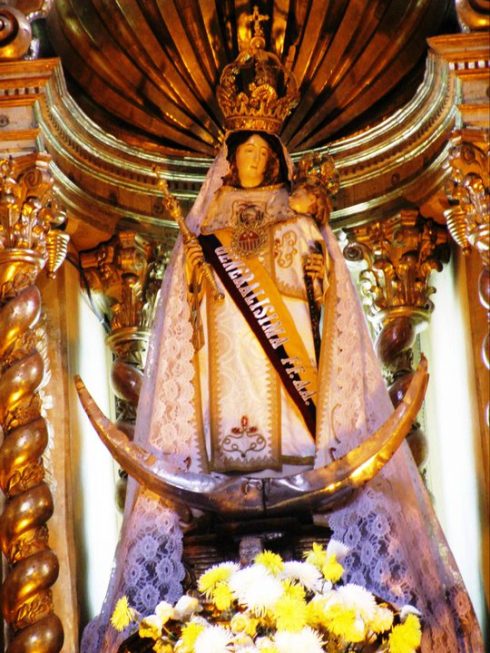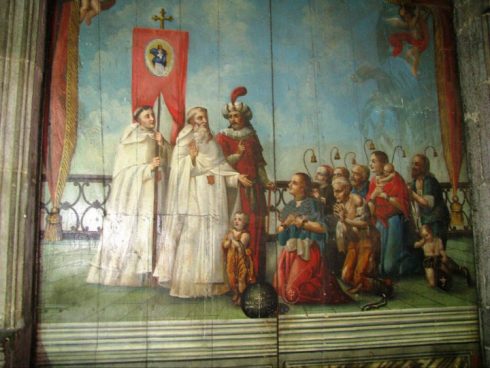Feast of Our Lady of Ransom (also known as Our Lady of Mercy)
24 September commemorates the foundation of the Mercedarians.
[Nobility.org note: The most current historical dates and facts can be found in the Mercedarian history book, available here: http://orderofmercy.org/charism.html] On 10 August, 1223, the Mercedarian Order was legally constituted at Barcelona by King James of Aragon and was approved by Gregory IX on 17 January, 1235. The Mercedarians celebrated their institution on the Sunday nearest to 1 Aug. (on which date in the year 1233 the Blessed Virgin was believed to have shown St. Peter Nolasco the white habit of the order), and this custom was approved by the Congregation of Rites on 4 April, 1615 (Anal. Juris Pont., VII, 136). On 22 Feb., 1696, it was extended to the entire Latin Church, and the date changed to 24 September. The Mercedarians keep this feast as a double of the first class, with a vigil, privileged octave, and proper Office under the title: “Solemnitas Descensionis B. Mariæ V. de Mercede”. Our Lady of Ransom is the principal patron of Barcelona; the proper Office was extended to Barcelona (1868) and to all Spain (second class, 1883). Sicily, which had suffered so much from the Saracens, took up the old date of the feast (Sunday nearest to 1 Aug.) by permission of the Congregation of Rites, 31 Aug., 1805 (double major), Apparition of Our Lady to St. Peter Nolasco in the choir of Barcelona, on the Sunday after 24 Sept. In England the devotion to Our Lady of Ransom was revived in modern times to obtain the rescue of England as Our Lady’s Dowry.F.G. HOLWECK (Catholic Encyclopedia)
Mercedarians (Order of Our Lady of Mercy)
A congregation of men founded in 1218 by St. Peter Nolasco, born 1189, at Mas-des-Saintes-Puelles, Department of Aude, France. Joining Simon de Montfort’s army, then attacking the Albigenses, he was appointed tutor to the young king, James of Aragon, who had succeeded to the throne after the death of his father, Pedro II, killed at the battle of Muret. Peter Nolasco followed his pupil to his capital, Barcelona, in 1215. From the year 1192 certain noblemen of that city had formed a confraternity for the purpose of caring for the sick in hospitals, and also for rescuing Christian captives from the Moors.
Peter Nolasco was requested by the Blessed Virgin in a vision to found an order especially devoted to the ransom of captives. His confessor, St Raymond of Pennafort, the canon of Barcelona, encouraged and assisted him in this project; and King James also extended his protection. The noblemen already referred to were the first monks of the order, and their headquarters was the convent St. Eulalie of Barcelona, erected 1232. They had both religious in holy orders, and lay monks or knights; the choir monks were clothed in tunic, scapular, and cape of white. These religious followed the rule drawn up for them by St Raymond of Pennafort. The order was approved, first by Honorius III and then by Gregory IX (1230), the latter, at the request of St Raymond Nonnatus presented by St Peter Nolasco, granted a Bull of confirmation and prescribed the Rule of St. Augustine, the former rule now forming the constitutions (1235). St. Peter was the first superior, with the title of Commander-General; he also filled the office of Ransomer, a title given to the monk sent into the lands subject to the Moors to arrange for the ransom of prisoners. The holy founder died in 1256, seven years after having resigned his superiorship; he was succeeded by Guillaume Le Bas.
Read More Here











